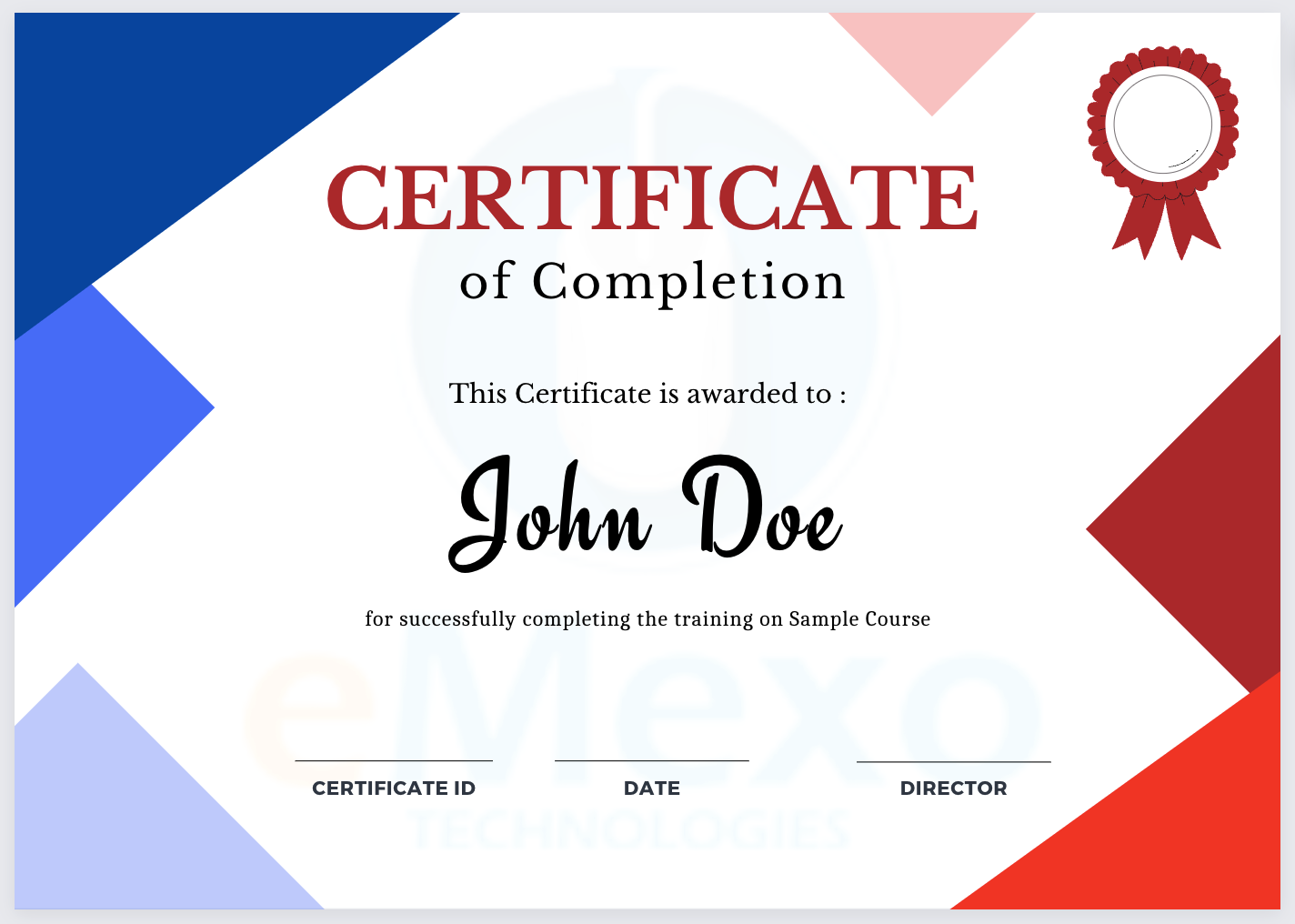Course Overview
Course Content
- Classic Data Center
- Virtualization
- Cloud and Cloud Computing
- Cloud Computing Service Models
- Cloud Computing Deployment Models
- Service Comparison: AWS, Azure, and GCP
- Amazon Web Services (AWS) and its Benefits
- AWS Global Infrastructure
- AWS Regions and Replication of data between the Regions
- Availability Zones and High Availability
- AWS Edge Location
- Different Amazon Web Services
- Ways to access AWS: CLI, Console, and SDKs
- User management through Identity Access Management (IAM)
- Various access policies across AWS Services
- Security Token Services
- AWS Resource Access Manager (RAM)
- AWS Single Sign-On (SSO)
- AWS Cognito
- AWS Security & Encryption: KMS, CloudHSM, Shield, WAF, Guard Duty
- Best practices for IAM
- Access billing and create alerts on billing
- Hands-On
- Virtualization
- Amazon Elastic Compute Cloud (EC2) and Its Benefits
- Amazon Machine Image (AMI)
- Security Groups in AWS
- Authentication through Key-pair
- Hardware Tenancy – Shared vs. Dedicated
- Networking Layer in EC2: VPC
- Elastic Network Interface (ENI) and Its Attributes
- Different Categories of IP Address
- Public IP vs. Elastic IP
- Storage Concepts
- Traditional Storage (SAN vs NAS vs Object)
- Why to Move to Cloud Storage
- Traditional vs. Cloud Storage Cost
- Cloud Storage
- Different Storage Options Available on AWS
- Hands-On
- Introduction to Block storages
- Instance Store
- Elastic Block Store (EBS), Its Features and Volume Types
- Solid State Drive: General Purpose SSD and Provisioned IOPS
- Hard Disk Drive: Throughput Optimized HDD and Cold HDD
- Previous-gen Drive: magnetic disk
- Snapshots and snapshot lifecycle policies
- Hands-On: Deploying and managing Block Storages
- Simple Storage Service (S3) and Its Components
- Working of S3
- Difference Between S3, EBS, and EFS
- Bucket Policy
- Access Control List(ACL)
- Versioning
- Cross-Region Replication (CRR) and Its Use Case
- Amazon S3 Transfer Acceleration
- Choice of Storage Classes on S3
- Lifecycle Policy of S3 Bucket
- CDN: CloudFront and AWS Global Accelerator
- Storage Gateways overview
- Hands-On
- Elastic Load Balancer and its types
- Advanced features of ELB
- Comparison of Classic, Network and Application Load Balancer
- Hands-On – Provisioning and managing the LB
- Auto-Scaling
- Components of Auto-Scaling
- Understanding about Launch Templates and Launch Configurations
- Lifecycle of Auto-Scaling
- Auto-Scaling policy
- Hands-On – Provisioning and integrating autoscaling with classic LB
- VPC – Benefits and Components
- CIDR Notations
- Network Access Control List v/s Security Groups
- NAT (Network Address Translation): NAT Devices, NAT Gateway and NAT instance
- Create and Manage Virtual Network
- Applying routing policies
- Managing internet gateway, NAT gateway
- Creating vpc to vpc peering to allow bidirectional communication between two different networks
- Creating and managing ACL and security settings
- Direct Connect overview
- Private Link and public link in Direct connect
- Hands-On
- Introduction to Route 53
- Understanding hosted Zone and its record-set
- Overview of Routing Policies
- Overview about fault tolerance
- Create and manage Route53 hosted zone
- Registering domain with resellers and updating the Name server of Route 53
- Creating A records to provide the domain name to services
- Understanding the different types of policies available in Route 53
- Creating High availability using Route53 failover policy
- Hands-On
- AWS Well-Architected Framework
- How to Build Well Architected Framework
- Pillars of AWS Well-Architected Framework
- Resilience
- Design Highly Available and/or Fault-Tolerant Architectures
- Choose Appropriate Resilient Storage
- Designing Decoupling Mechanisms Using AWS Services
- Design a Multi-tier Architecture Solution
- Disaster Recovery (DR)
- Options to Implement DR Plans
- Design High-Performance Architecture
- Achieve Performance Efficiency using Review
- Achieve Performance Efficiency by Monitoring
- Hands-On
- Design Secure Applications and Architectures
- How IAM Secures your Resources
- Benefits of Identity and Federation
- Shared Responsibility Model
- Shared Responsibility Model for Infrastructure Services
- Shared Responsibility Model for Container Services
- Shared Responsibility Model for Abstraction Services
- Network Security Layer
- Multi-Layer Architecture with Network Security
- AWS HSM and its working
- AWS S3 Security
- AWS Security and Compliance Centre
- Design Cost-Optimized Architectures
- Cost Optimization Design Principles
- Cost Effective Resources
- Why Cloud Migration
- What is Cloud Migration
- Migration Phases
- CAF Perspectives and their Roles
- AWS Migration Hub and ways to use AWS Migration Hub
- AWS Migration Hub use cases
- AWS Application Discovery Service
- Application Discovery Tools
- Application Migration to AWS
- Application Migration Phases
- AWS Server Migration Service (SMS) and its working
- Database Migration Service
- AWS Database Migration use cases
- Types of data transfer: Homogenous and Heterogenous
- Database Schema Migration tool
- Database Migration best practices
- Hands-On
- Different software release methodologies
- DevOps Lifecycle and its Building Blocks
- DevOps and cloud relation
- Different AWS Developer tools
- AWS CodeCommit
- Versioning in S3 vs. CodeCommit
- Working of AWS CodeCommit
- AWS CodePipeline and its working
- Concepts of CodePipeline
- Input and Output Artifacts
- AWS CodeBuild and its working
- AWS CodeDeploy
- Primary Components
- Deployment Workflow: On Lambda Platform and On EC2 Platform
- Application Specification File
- Deployment Types: In-Place Deployment and Blue/Green Deployment







